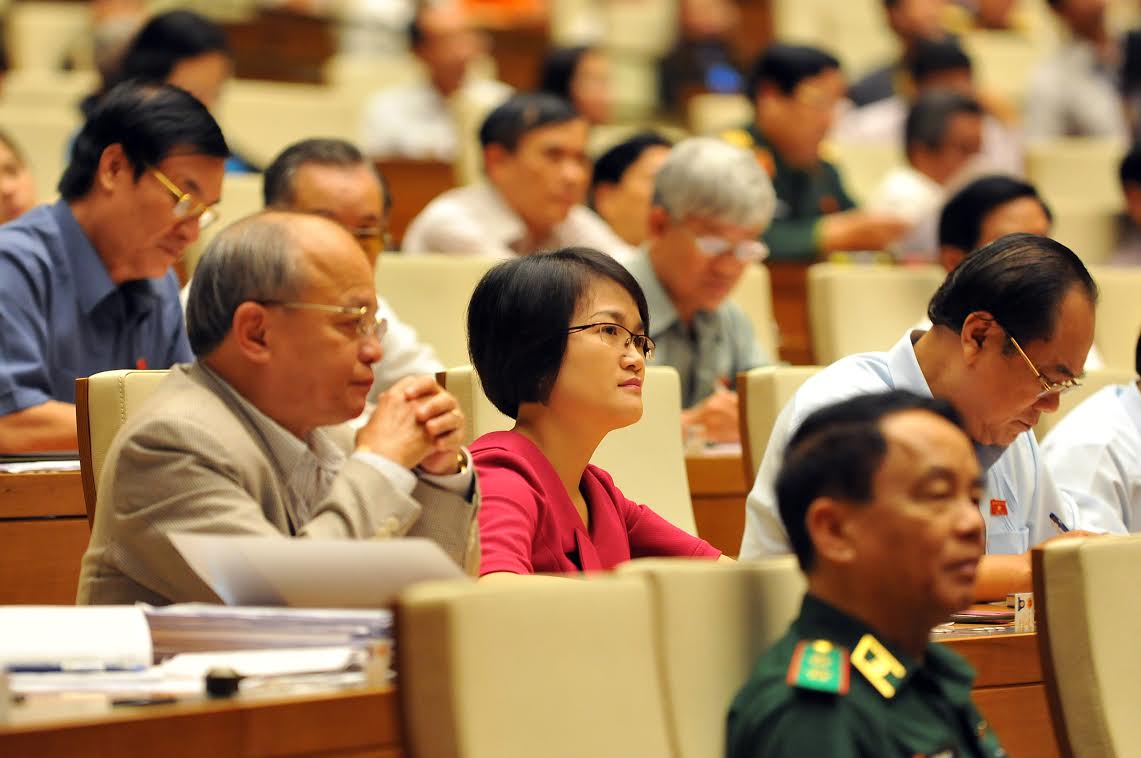Among the human rights recognized by the Constitution of Vietnam, citizenship rights hold significant importance. Citizens in Vietnam are permitted to conduct themselves in a certain manner or request others to perform specific acts to satisfy their interests.
This authority is guaranteed by State enforcement. To protect the civil rights of subjects, the State of Vietnam stipulates various measures and methods of protection, one of which is the counterclaim right of the defendant. Provisions regarding the defendant's counterclaim create a legal foundation to ensure the defendant's litigation rights, ensure the parties' discretionary rights, and facilitate the swift and comprehensive resolution of the parties' requests in civil disputes. In this article, the author delves into "The Counterclaim Right of the Defendant as Stipulated in Civil Procedure Law".
Counterclaim is the right of the defendant in a civil case. Essentially, a counterclaim is when the defendant files a lawsuit against the plaintiff (i.e., sues back against the plaintiff's claim) but is considered and resolved together with the plaintiff's lawsuit in the case as the resolution of both parties' requests are closely related. If the defendant's request is completely unrelated to the plaintiff's lawsuit, then the defendant must file a separate civil case. Thus, the defendant's counterclaim request only arises when the plaintiff sues the defendant and the competent court accepts the case regarding the plaintiff's request. Subsequently, the defendant also believes that his/her rights and interests are being infringed upon and petitions the court to resolve issues related to the plaintiff's request within the same civil case.
That is, when sued in a civil case, the defendant has the right to present opinions or counterclaims. However, in reality, many defendants have overlooked their counterclaim rights because they either do not know this specific right is stipulated in the law or do not fully understand their rights in civil procedures. The term "counterclaim" originates from Chinese, making it often confusing for newcomers. Fundamentally, "counterclaim" can be understood as the right of the "accused" – the sued party or defendant – to present requests that "oppose" the plaintiff's claims. Here, "oppose" is broadly understood as independent from the plaintiff's requests, but the opposition may not just include directly excluding the plaintiff's request but may include offsetting the obligations stated in the plaintiff's request. Initially, this counterclaim request might seem similar to presenting opinions against the plaintiff's lawsuit since these claims are closely related to the initial request of the plaintiff. However, in fact, these two requests differ entirely in their legal consequences, and each party in the case must clearly understand these rights to protect their legitimate rights and interests.
Regarding the subject executing the counterclaim right. According to Point c, Clause 1, Article 200 of the 2015 Civil Procedure Code, the defendant is allowed to "present a counterclaim against the plaintiff if it is related to the plaintiff's request or propose an offset with the obligation that the plaintiff requests." By this provision, the counterclaim request can only be made if and only if the defendant has a request against the plaintiff. In cases where the authorized representative of the defendant participates in litigation in cases with counterclaim requests against the plaintiff, how should the court resolve it? Suppose, upon receiving the case acceptance notification, the defendant identified with a counterclaim request authorizes another person to participate in the litigation at court according to proper procedures and has full authority to decide on related matters in the case. In this case, many courts have accepted the counterclaim request from the authorized representative, but some courts have not accepted it, arguing that the counterclaim request must be made directly by the defendant. The authorized representative does not have the right to make a counterclaim because they are not the defendant but just the authorized representative of the defendant.
Regarding the defendant's written opinions on the plaintiff's claim. This is a right; hence the defendant may choose to exercise it or not. However, the law also sets limits on exercising this right within 15 days from the date the defendant receives the plaintiff's claim. If an extension is necessary, it is allowed but not exceeding 15 days. In practice, presenting opinions can be applied throughout the entire case resolution process, and the defendant does not have the duty to prove their opinions.
Regarding the defendant's counterclaim request, the defendant has the right to present a counterclaim before the session to check the handover, access, disclosure of evidence, and mediation. The counterclaim request is made following the lawsuit procedures of the plaintiff. Thus, in essence, presenting a counterclaim request is similar to filing a case, making the defendant’s role not merely as a defendant but also holding the rights and duties of a plaintiff in a civil case. However, what constitutes a legitimate counterclaim request to be accepted by the court will be deeply analyzed based on the following aspects:
Firstly, in terms of content, the counterclaim request is accepted only when it falls under one of the cases stipulated in Article 200 of the 2015 Civil Procedure Code.
"a, A counterclaim request to offset obligations with the plaintiff's request or the independent request of persons with related interests and obligations;
b, A counterclaim request that, if accepted, would exclude the acceptance of part or all of the plaintiff's request or the independent request of persons with related interests and obligations;
c. The counterclaim request is related to the plaintiff's request or the independent request of persons with related interests and obligations, and if resolved in the same case, it will make the resolution more accurate and faster."
Currently, no specific documents further guiding this provision exist, but one can refer to the provisions in Resolution 05/2012/NQ-HDTP of the Supreme People's Court. Here, firstly, the counterclaim request must be a request separate from the plaintiff’s lawsuit request. Determining what constitutes a request separate from the plaintiff’s request may initially seem abstract, but the author provides a specific example for better understanding: "If the plaintiff requests payment of money under a sales contract, and the defendant states that they will only pay part or do not accept paying money arising from the sales contract to the plaintiff, this is not a counterclaim request but merely the defendant’s opinion on the plaintiff’s lawsuit request, as the defendant’s request is also about the payment obligation arising from the same contract as the plaintiff. But if the defendant asks the plaintiff to pay money arising from another sales contract, this could be considered a counterclaim request because though it involves the same payment obligation, it arises from a different sales contract, meaning its nature differs from the plaintiff’s request – determining whether it is a counterclaim request depends on factors the author continues to analyze below.
Next, to determine what constitutes a counterclaim request, it must fall under one of the three legal cases:
(1) In cases of a counterclaim request to offset obligations with the plaintiff, Resolution 05/2012/NQ-HDTP provides an example:
"Plaintiff A files a lawsuit requesting defendant B to pay the overdue house rent of 2005 amounting to five million VND. Defendant B requests plaintiff A to pay him three million VND for the expenses incurred to repair the damaged house and the land use tax paid on behalf of the plaintiff. In this case, defendant B's request is considered a counterclaim request against the plaintiff A." Here, the offset obligation is the specific monetary obligation defendant B owes plaintiff A, which may be offset with the money defendant B spent repairing the house.
(2) In cases of a counterclaim request leading to the exclusion of part or all plaintiff's request, for example: "A owns a car and sold it to C but told B (A's child) that it is rented to C at 5 million VND per month. After A's death, B sues C for rent arrears of 12 months totaling 60 million VND. C counterclaims requesting the court to recognize the ownership of the car, leading to a dispute. If the court accepts C's counterclaim, it would exclude the entirety of B’s rent claim against C." Here, C's counterclaim excludes the entire plaintiff B's claim.
(3) A counterclaim request brought up, if resolved together in one case, would make the resolution more accurate and faster.
Resolution 05/2012/NQ-HDTP provides an example: "Ms. M sues Mr. N for child support for P amounting to 300,000 VND monthly. Mr. N counterclaims requesting the court to determine that P is not his biological child." In this case, Mr. N's request does not offset with Ms. M’s request, nor does it eliminate Ms. M’s request—Ms. M’s request remains legitimate if P is Mr. N's biological child. However, resolving Mr. N’s request will lead to a final conclusion on Ms. M’s request. In practice, the plaintiff’s requests may be more complex, and the defendant’s counterclaims can also be in various aspects, possibly falling into one or more of the three legal cases above, and the acceptance of part of the counterclaim also depends on the judge handling the case.
Secondly, in terms of form, executing the counterclaim right of the defendant must adhere to the same procedure as filing a lawsuit. The defendant must draft a counterclaim in writing and submit it to the court, then fulfill the obligation of prepaying the court fees like the plaintiff. The preparation time for trial is recalculated from the date the defendant pays the court fee or, in cases where the defendant is exempt from court fees, from the date the court receives the counterclaim. Besides procedural elements, the legal consequences also fundamentally change if the defendant brings a counterclaim. Specifically: instead of previously the defendant having no obligation to prove his/her opinions, now the defendant must actively prove the counterclaim request. When the plaintiff withdraws the lawsuit, if the defendant does not bring a counterclaim, the judge will dismiss the case. However, if the defendant has made a counterclaim, the roles of the parties will change; the defendant becomes the plaintiff, and vice versa, the plaintiff becomes the defendant. The case continues to be resolved.
Thirdly, from the author's perspective, should the statute of limitations apply to counterclaims?
In reality, some courts in various localities have different views on whether the statute of limitations applies to counterclaims. There are two diverging opinions:
(1) Counterclaims should be treated as a lawsuit request and thus be subject to the statute of limitations like any lawsuit request. According to Clause 4, Article 72 of the 2015 Civil Procedure Code, the defendant "has the right to bring a counterclaim against the plaintiff if related to the plaintiff's request or propose an offset with the plaintiff’s obligation. For counterclaims, the defendant has the rights and obligations of the plaintiff stated in Article 71 of this Code." Thus, the defendant’s counterclaim is understood as a request to file a lawsuit. When a “counterclaim” arises, the defendant has all the rights and obligations of a plaintiff. If the counterclaim surpasses the statute of limitations, the court will base on it not to accept the defendant's lawsuit. Clause 1, Article 146 of the 2015 Civil Procedure Code also states that "plaintiffs, defendants with counterclaims, and persons with related interests and obligations with independent claims in civil cases must prepay the trial fees for the first instance, appellants must prepay appellate trial fees, unless exempt or not required to prepay” Therefore, the defendant must prepay court fees for their counterclaim. Moreover, Article 202 of the 2015 Civil Procedure Code stipulates that "procedures for counterclaims or independent claims shall follow the regulations of this Code on procedures for the plaintiff’s lawsuit." Thus, counterclaims are treated as lawsuit requests and must comply with the statute of limitations as stipulated in Article 184 of the 2015 Civil Procedure Code.
(2) Counterclaims are not considered lawsuit requests but just follow similar procedures due to their nature and thus are not subject to the statute of limitations. When a lawsuit is initiated by the plaintiff, after the court accepts it, the defendant must understand the plaintiff’s claims to decide whether to accept or counterclaim. Clause 4, Article 200 of the 2015 Civil Procedure Code stipulates that "The defendant has the right to bring a counterclaim at any time before the session to check the handover, access, disclosure of evidence, and mediation." Hence, the statute of limitations applies only to the plaintiff's claims, not the defendant's counterclaim, meaning "this is a right not limited by the statute of limitations of the defendant."
In reality, in all civil lawsuits, the defendant is always in a passive position, dependent on the plaintiff’s claims. The plaintiff makes the claims, and the defendant can then decide to counterclaim based on those claims. That is, counterclaims always follow the plaintiff’s claims, only arising after the plaintiff’s claims are made. The defendant’s counterclaim right “arises” from the plaintiff’s claim.
Furthermore, the statute of limitations for civil cases allows subjects to file a lawsuit, meaning it provides a timeframe for plaintiffs to exercise their lawsuit rights. Article 200 of the 2015 Civil Procedure Code stipulates the counterclaim right of the defendant without requiring the defendant to counterclaim within the statute of limitations. Therefore, from the time the court accepts the case until before the session to check the handover, access, disclosure of evidence, and mediation, the defendant can counterclaim at any time.
From these analyses, it is evident that the execution of the defendant’s counterclaim right greatly impacts the case resolution process in terms of content and form. In practice, defendants often miss using this right due to lack of awareness. Specifically, ordinary citizens often do not know how to clearly present their requests and typically intertwine them with their opinions on the plaintiff’s claims. Procedurally, they also do not know the steps involved if presenting a counterclaim. In practice, court officials do not provide specific guidance. Law needs to be clear, straightforward, and more accessible regarding this right and the responsibilities of court officials in informing parties of their rights and guiding them. Thus, the law must deeply integrate into real life to ensure its function of protecting justice. Furthermore, the author suggests amending Clause 1, Article 200 of the 2015 Civil Procedure Code toward a timed requirement: “Along with submitting a written counterclaim statement to the court,” it should also include specific definitions and forms of a counterclaim in clearly guided documents. This would simplify determining the timeframe; on the other hand, Article 200 of the will no longer be an isolated regulation but must relate to other regulations of Civil Procedure Code and the authorization regime stipulated in the Civil Code. When participating in litigation, parties have the right to authorize someone to represent them, based on which the authorized representative’s right to counterclaim should be established.
Doctor Doan Thi Ngoc Hai
Source: Ministry of Justice
- Key word:
- Civil Litigation
- defendant
- Vietnam
 Article table of contents
Article table of contents










.Medium.png)
.Medium.png)
.Medium.png)
.Medium.png)
